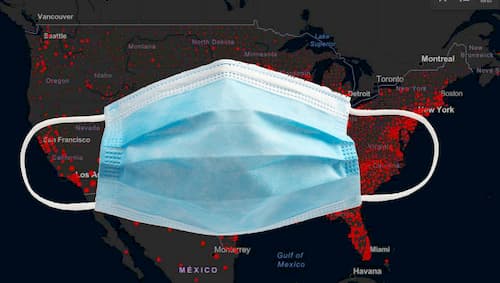 SITKA, February 28, 2020 – While Alaska has yet to see any confirmed cases of the 2019 novel coronavirus, now known as COVID-19, the SouthEast Alaska Regional Health Consortium (SEARHC) is closely monitoring information being provided by the Alaska Department of Health and Social Services (ADHSS), the Centers for Disease Control (CDC), and other state, federal and global health organizations as they work to monitor, contain, and mitigate the impact of the virus.
SITKA, February 28, 2020 – While Alaska has yet to see any confirmed cases of the 2019 novel coronavirus, now known as COVID-19, the SouthEast Alaska Regional Health Consortium (SEARHC) is closely monitoring information being provided by the Alaska Department of Health and Social Services (ADHSS), the Centers for Disease Control (CDC), and other state, federal and global health organizations as they work to monitor, contain, and mitigate the impact of the virus.
“SEARHC’s top priority is the safety of our patients and staff,” said SEARHC Vice President and Chief Medical Officer Dr. Elliot Bruhl. “We will continue to communicate and coordinate with various healthcare agencies to ensure we have the most up-to-date, comprehensive response plan. With hundreds of experienced providers and dozens of exceptional facilities across Southeast, SEARHC has the capacity to provide high-quality care should the threat of the virus reach our region.”
According to a Feb. 27, 2020, update posted on the ADHSS website, “the Alaska Section of Epidemiology is closely monitoring the rapidly emerging outbreak of COVID-19 first identified in Wuhan, Hubei Province, China. Additional cases have been identified in a growing number of other international locations, including the United States. There are currently no confirmed cases in Alaska.”
COVID-19 symptoms are similar to those of the flu – fever, aching, cough, and shortness of breath. The CDC believes that symptoms of the novel coronavirus may appear within two to 14 days after exposure. Recent travel to Wuhan, or close contact with someone who recently traveled to an affected geographic area, is an important risk factor.
The CDC states that the virus is spread mainly from person-to-person, between individuals in close contact, through an infected cough or sneeze. It may be possible that a person can acquire COVID-19 by touching an infected surface, or object, and transferring to one’s own mouth, nose, or eyes, but this is not thought to be the main way the virus spreads.
[content id=”79272″]
With no viable vaccines or medications identified, the best way to prevent illness is to avoid being exposed to this virus. In addition, the CDC recommends everyday preventive actions, such as washing your hands thoroughly and often; covering of coughs and sneezes; cleaning and disinfecting surfaces and objects; and getting a flu shot to eliminate concerns, as COVID-19 symptoms are similar to those of influenza.
If you are concerned you might have contracted the coronavirus, don’t panic, as the flu or another respiratory virus is still the most likely cause. Contact your healthcare provider for advice. If you choose to visit an emergency department, call ahead to alert staff of your coronavirus concerns and request a mask be brought out to you prior to entering to reduce the risk of exposure. SEARHC implemented COVID-19 screening protocols in early-February at all locations and recently established the Incident Command System (ICS) roles throughout the organization to ensure our ability to rapidly respond to changes which affect our communities.
Visit searhc.org to find a healthcare provider in your area. For health questions or concerns outside of normal clinic hours, patients can contact the 24/7 Nurse Advice Line at 1.800.613.0560 to be triaged by a registered nurse. SEARHC marketing will issue external information on COVID-19 identification, prevention and care throughout the region on social media platforms and within the “healthy is here blog” on searhc.org indefinitely.
###


